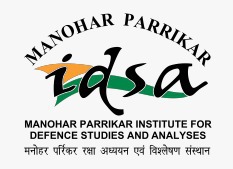Publishing Official Military Histories
We recommend that the histories of the 1965 and 1971 wars be revised, updated and reprinted as proper official versions with the correct title and logo.
- P. K. Gautam , Rana T.S. Chhina
- October 16, 2015
The Centre for Military Affairs comprises of a mix of serving officers of the Indian Armed Forces and civilian experts. The Centre adopts an inter-disciplinary approach to various issues that impinge upon India’s national security in general and the armed forces in particular. Its research focus is on issues that impact upon national security and capacity-building of the Indian armed forces. Specific areas of focus include: emerging contemporary challenges in warfare, jointness, defence co-operation, maritime security, and military training needs. In addition, the Centre also addresses China- and Pakistan-related issues with a bearing on their interface with Indian security. The Centre closely interacts with military establishments in India and abroad and contributes to policy making by conducting research in areas of significance for the armed forces.
No posts of Books and Monograph.
No posts of Jounral.
We recommend that the histories of the 1965 and 1971 wars be revised, updated and reprinted as proper official versions with the correct title and logo.
Nothing conveys strategic intent as effectively as the large conventional warship whose mere presence can provide a decisive psychological advantage in strategic scenarios.
By engaging GCC navies through joint exercises, port calls, and training programmes, the Navy has successfully created a durable template of maritime relations in the Western Indian Ocean.
The ceasefire decision was influenced by the combination of three factors: absence of the prospect of a swift victory, concerns about Chinese military intervention, and concerted diplomatic pressure from major powers.
A growing Sino-Russian-Pakistani maritime nexus in the IOR poses a challenge to India’s influence in the Indian Ocean and heralds a potential change in the Asian balance of maritime power.
A dissatisfied military is not in the interest of India which has to contend with multiple internal and external security issues. The nation at large and the political leadership must be alive to the prevailing sentiments and act appropriately.
China’s new military strategy as it applies to the Indian Ocean is not a matter of a minor shift in the balance of maritime power, but one that impacts India’s capacity and will to impose a deterrent cost.
The new version of US maritime strategy candidly recognises China’s maritime expansion and territorial claims as a source of regional unrest, but stops short of recognising the A2/AD challenge even as it pronounces “all-domain access” as a strategic prerequisite.
Despite the lessons learnt during the Kargil conflict, where artillery firepower paved the way for victory, modernisation of the artillery continued to be neglected. The recent acquisition of 814 truck-mounted 155 mm/52-calibre guns is a step in the right direction.
The incident raises important issues. First, the role of honours and awards in such crimes, second, the impact of punishment on the morale of troops who undertake a challenging responsibility and last, its impact on the population of the disturbed area at large.



